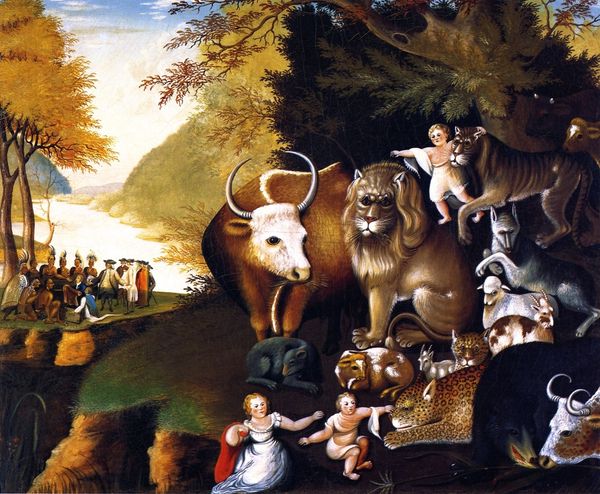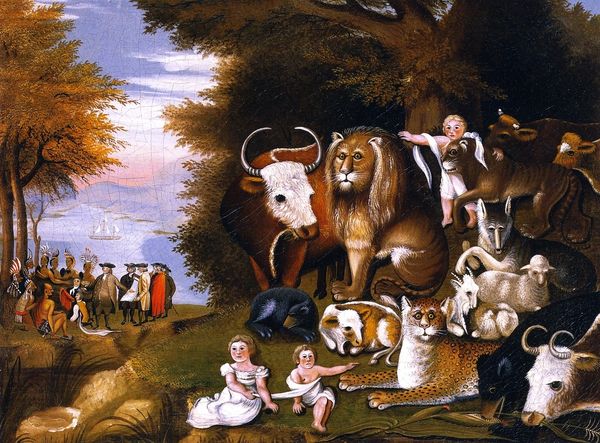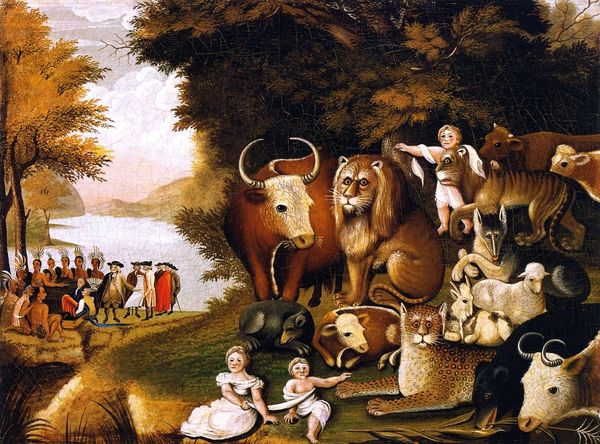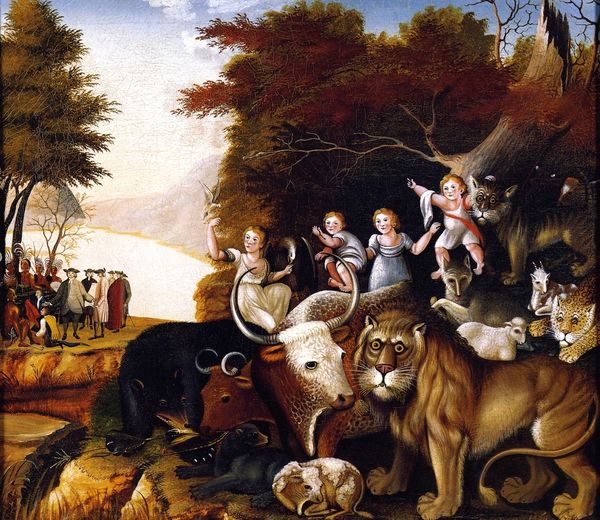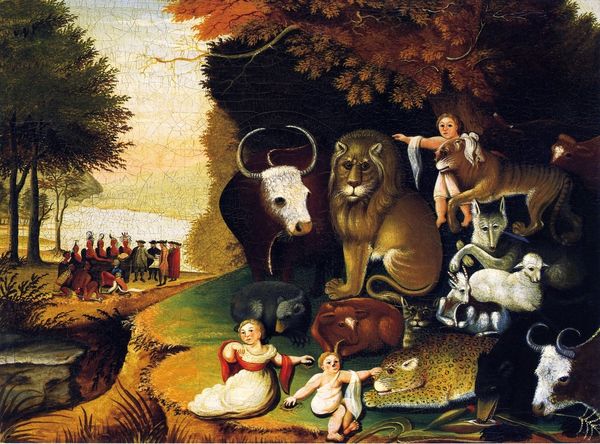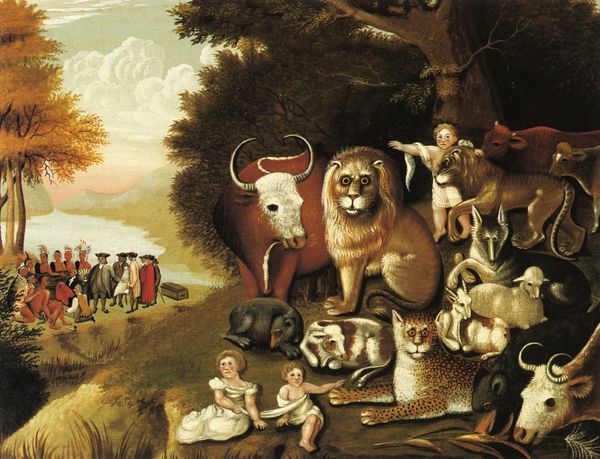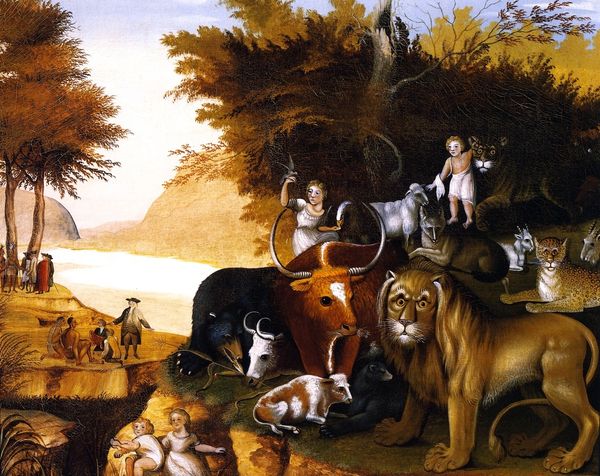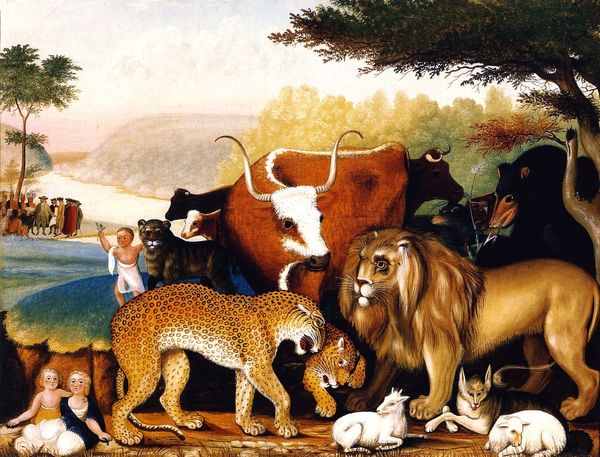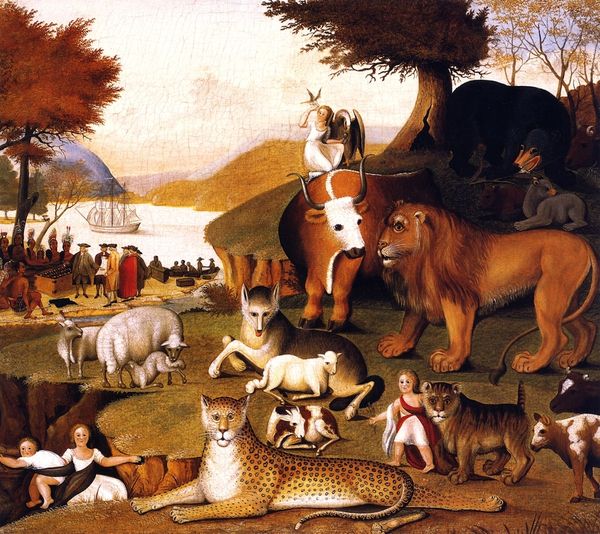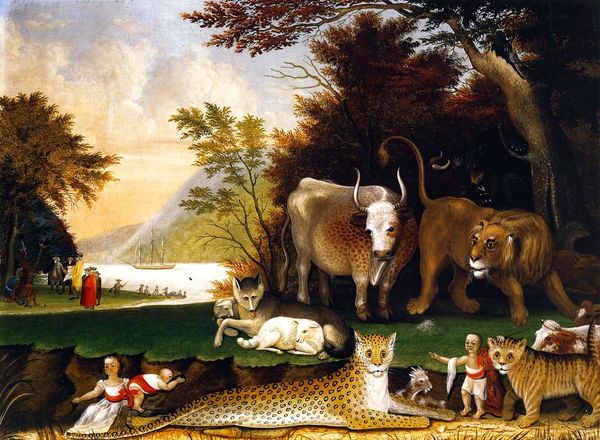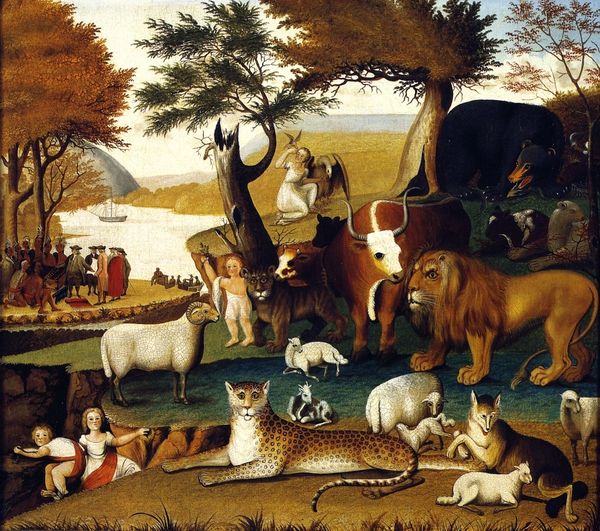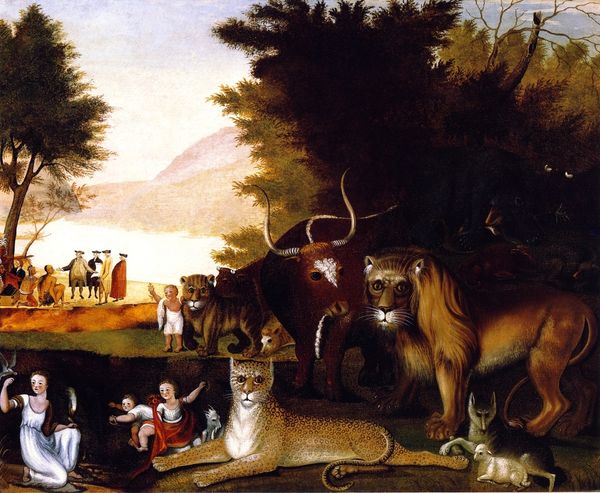
painting, oil-paint
#
allegory
#
narrative-art
#
painting
#
oil-paint
#
landscape
#
figuration
#
romanticism
#
surrealism
#
genre-painting
#
realism
Copyright: Public domain
Editor: Here we have Edward Hicks's "Peaceable Kingdom," painted in 1840, created with oil paint. It feels so dreamlike! The animals, the children... it’s all quite fantastical. What do you see in this piece, looking at it from your perspective? Curator: From a materialist lens, this work opens up interesting avenues for exploring 19th-century American society. Look at the way Hicks painstakingly rendered each animal's fur. What kind of labor went into creating those pigments? Who were the suppliers, and what were the economic conditions that made this painting possible? The oil paint itself is a product of specific technologies and resources. Editor: That's fascinating; I hadn’t considered the materiality of the paint itself. It’s easy to get lost in the symbolism. But why focus on the materials? Curator: By considering materials, we see that artistic creation is embedded within systems of labor, trade, and consumption. What are the implications of a Quaker artist creating and selling an image of utopian peace for profit? How does that interact with, perhaps even complicate, the image itself? And what did making art *mean* at this historical moment, with the context of industrial advancements? The production is inherently intertwined with its message. Editor: So you are saying by investigating the social conditions and making the processes visible, we see art as something actively *made* rather than mysteriously appearing? I understand now. Thank you! Curator: Precisely. Examining the tangible elements anchors the dreamlike quality within a specific historical and economic reality. Editor: This completely changes my perception. It pushes me to really consider not just what the art shows, but also how the work *came* to be.
Comments
No comments
Be the first to comment and join the conversation on the ultimate creative platform.
